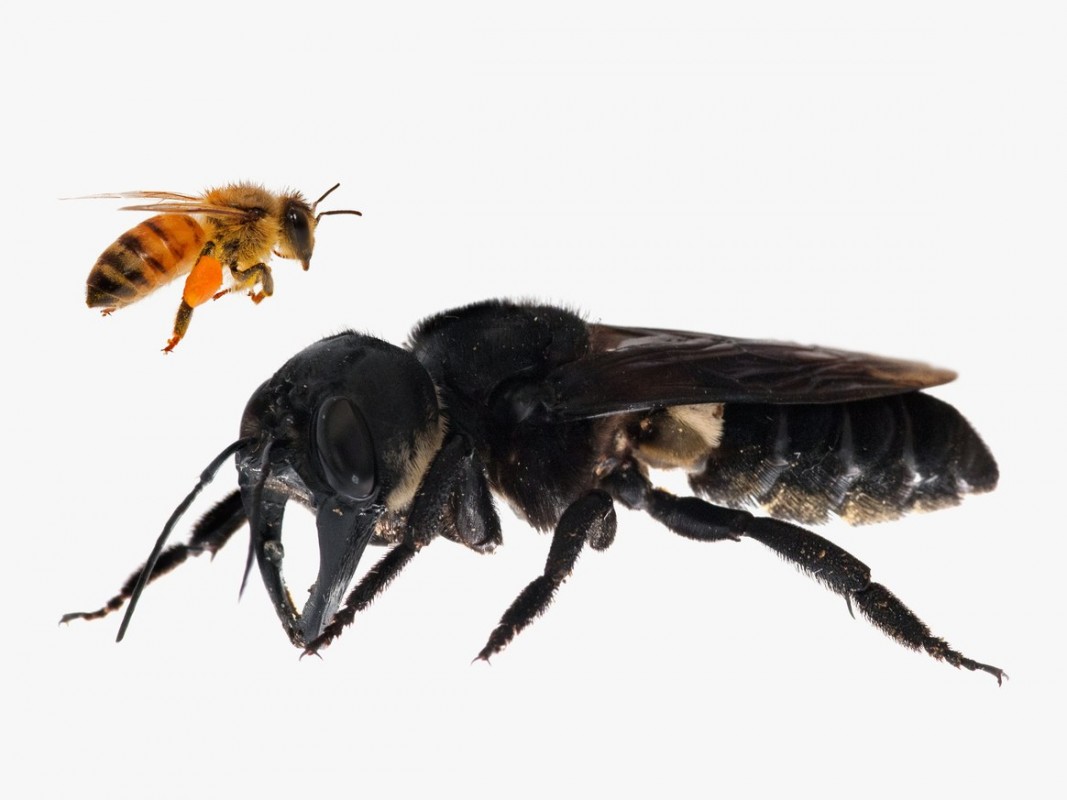 If regular bees weren’t terrifying enough, a giant one was recently rediscovered on the islands of North Moluccas, Indonesia by nature photographer Clay Bolt and his team.
If regular bees weren’t terrifying enough, a giant one was recently rediscovered on the islands of North Moluccas, Indonesia by nature photographer Clay Bolt and his team.
Thought to be extinct for 38 years, this fearsome insect is almost three times the size of the typical honeybee and has a pair of striking mandibles not unlike those of a beetle.
The giant bee, which can grow up to 1.5 inches and has a wingspan of 2.5, was first discovered in 1858 by young explorer Alfred Russel Wallace, who gave the bee its name—Wallace’s giant bee (Megachile pluto).
How did the bee get so big?
 Unlike their tinier relatives, the honeybees, giant bees do not dwell in sophisticated hives. Instead, these bees live solitarily in overtaken termite nests complete with intricate tunnels.
Unlike their tinier relatives, the honeybees, giant bees do not dwell in sophisticated hives. Instead, these bees live solitarily in overtaken termite nests complete with intricate tunnels.
In 1981, entomologist Adam Messer observed a live female bee use her mandibles and labrum, a part of her mouth, to scrape resin off a tree and form it into a large ball. This, along with some wood fibers, she carried back to her burrow and used to line the tunnel walls.
What purpose do the resin and wood fibers serve? For one thing, they make the bee’s tunnels waterproof, and for another, they make them termite-proof. As Bolt asserts, the bee itself is strong enough to “power” through the resin-coated passageways, but the termites, being relatively small compared to the bee, become trapped in the sticky material. Thus, termites removed, the bee is free to grow.
Why is this rediscovery important?
The rediscovery of Wallace’s giant bee brings new hope to the scientific and conservationist society, despite a recent report detailing the decline of insect populations worldwide.
In addition, it raises awareness about the need for greater conservation efforts. Wallace’s giant bees are increasingly vulnerable, facing deforestation, habitat loss, and the greater susceptibility that comes with their large size. After all, the bigger an organism, the fewer organisms that can live in one area.
Recently, two unaccounted-for specimens were sold on eBay, one of which racked up a selling price of $9,100. With this high selling price, capturing a giant bee is all the more attractive to poachers.
As Bolt has so aptly stated, “Now’s not the time to wave your hands in despair. Now’s the time to get to work and try to do what we can to protect bees.”
Sources: NYTimes, Wired, National Geographic







